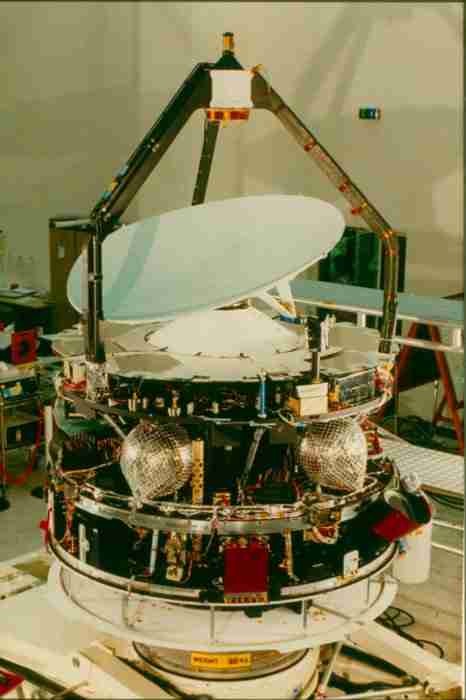NASA demonstrated a great ambition, as it hoped to accompany the comet along its orbit, with progressive changes of the trajectory of the probe using ion propulsion, which is based on the ejection of ions accelerated by grids at high electric potentials. But the public enthusiasm generated by the Viking missions to Mars fell because they did not show the presence of life on the planet, and NASA abandoned the idea of accompanying a comet in its movement. This would be realized much later by the Rosetta mission.
The situation was most favorable in Europe, which had created a space agency, the European Space Agency in 1975. ESA planned in 1976 a cometary mission. Given its own financial problems, NASA offered to ESA in 1979 a joint mission to the comet. But ESA rightly feared an American defection, which actually soon occurred. Fortunately, ESA had decided in 1980 to develop its own mission: it would be the Giotto project, named in honor of the painter who depicted Halley’s comet in 1305, in a famous fresco in Padua, Italy.
The Giotto spacecraft was to be launched in July 1985, in time to reach the comet, which required that all the included instruments be ready by the end of 1984. This was a challenge that had been met very satisfactorily: The launch by an Ariane rocket could take place on July 2, 1985 as foreseen.

L’Adoration des Mages, fresque peinte par Giotto (ca. 1266-1337) sur les murs de la chapelle Scrovegni (Padoue, Italie) vers 1305. L’astre qui est censé avoir guidé les mages est représenté sous la forme d’une comète, probablement en souvenir du passage de la comète de Halley en 1301. C’est à partir de cette représentation qu’a été baptisée la sonde Giotto.
Crédit : DRMeanwhile, in France, there was an active collaboration between the French space agency, CNES, and its Soviet counterpart. Venera-84 was a joint project aimed at exploring Venus. But after flying over Venus, why not head to the comet? The Soviets would then take their revenge on the Americans. The project was accepted and renamed Vega (a contraction of Venera-Halley in Russian). As often with the Soviets, it had two identical probes; the French astronomers put an infrared spectrometer called IKS (“InfraKrasnoie Spektrometer” in Russian) on each.
Meanwhile the Japanese space agency discreetly built the Suisei and Sakigake probes, primarily for studying the ionized wind emitted by the Sun, but which were to pass near enough to the comet to observe it.
The five probes — one European, two Soviet and two Japanese — reached the comet in March 1986 at more or less great distances. NASA, which had just suffered the disaster of the explosion of the shuttle Challenger on the previous January 28, watched the event helplessly.

Modèle des deux sondes soviétiques Vega. À droite, l’antenne parabolique de télécommunications avec la Terre. La sphère inférieure est l’atterrisseur qui se posera sur Vénus. Le ballon blanc, en haut, est celui qui est gonflé au moment de l’atterrissage : il porte un petit appareil de mesure et se détachera dans l’atmosphère de Vénus.
Crédit : Daderot / Wikimedia Commons